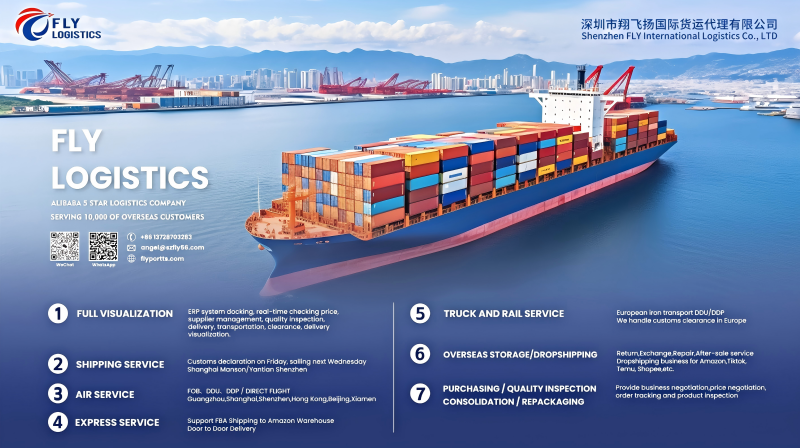The global ocean freight market is bracing for a significant shift as container shipping rates face downward pressure in February, driven by a tentative ceasefire in the Middle East and the seasonal slowdown of China’s Lunar New Year. Despite aggressive capacity management strategies by carriers, industry analysts predict further declines in spot rates across major trade lanes, with implications for shippers, consignees, and supply chain planners.
Sharp Declines in Key Trade Lanes
According to the latest data from Xeneta, a leading freight rate benchmarking platform, spot rates on critical routes have already plummeted since the start of 2024. The downward trend is expected to accelerate in early February, with Xeneta forecasting an additional 5–10% decrease in spot rates for both Europe and Mediterranean-bound shipments. This aligns with the broader market sentiment that the looming Middle East ceasefire—though not yet guaranteeing safe passage through the Red Sea—has already shifted trader confidence. U.S.-bound routes are also feeling the heat. Rates to the East Coast fell 7% in January to 6,417 per FEU. Analysts anticipate further declines on the West Coast, whereas East Coast rates may stabilize due to ongoing diversions from drought-stricken Panama Canal routes.
Ceasefire Sparks Market Sentiment Shift
The provisional ceasefire between key Middle Eastern factions, which began on January 19 and is set to last 42 days, has injected cautious optimism into global trade. While the agreement does not immediately resolve risks in the Red Sea—a critical chokepoint for Asia-Europe shipments—it has softened the “risk premium” previously baked into freight rates.
“A ceasefire doesn’t suddenly mean all container ships can sail safely through the Red Sea, but it changes market psychology,” explains Peter Sand, Xeneta’s Chief Analyst. “Shippers are less willing to pay inflated rates for longer voyages around Africa, and carriers are recalibrating their strategies.”
Since late 2023, Houthi attacks in the Red Sea have forced many vessels to detour via the Cape of Good Hope, adding 10–14 days to voyages and tightening capacity. This disruption propelled spot rates to record highs, with some carriers charging premiums of over 300%. The ceasefire, however tentative, has eased fears of prolonged disruptions, prompting buyers to push for lower rates.
Carriers Fight Back with Blank Sailings
In response to falling demand and rates, ocean carriers are doubling down on capacity management. Blanked sailings (canceled voyages) are surging, particularly on the Far East to Mediterranean routes, where cancellations will reach 38,900 twenty-foot equivalent units (TEUs) by late February—a 318% spike from current levels. Similarly, the Far East to North Europe blank sailings will hit 75,700 TEUs, up 449%.
These measures aim to prevent a freefall in rates by aligning supply with weakened post-holiday demand. The Lunar New Year (February 10), which typically halts Asian manufacturing for weeks, has compounded the slowdown. Factories across China and Southeast Asia close, reducing export volumes and leaving carriers with underutilized vessels.

Red Sea Uncertainty Lingers
Despite the ceasefire, the Red Sea remains a geopolitical tinderbox. The agreement’s second phase, which could lead to a permanent peace deal, remains uncertain. Should hostilities resume, carriers may again avoid the Suez Canal, reigniting supply chain chaos and rate volatility.
For now, however, the mere prospect of stability has altered dynamics. Insurance premiums for Red Sea transits have dipped slightly, and some carriers are cautiously resuming Suez routes. Mediterranean Shipping Company (MSC), for instance, has reintroduced limited Suez-bound services, citing improved security assurances.
“The industry is hedging its bets,” notes Sand. “Every carrier has contingency plans, but for February, the focus is on surviving the rate slump.”
Implications for 2025 and Beyond
While the current downturn centers on short-term factors, Xeneta warns that February’s market behavior could set the tone for 2025 contract negotiations. Long-term agreements (LTAs) signed during periods of low spot rates often lock in discounts for shippers, eroding carrier profitability.
“February will be a bellwether,” emphasizes Sand. “If carriers fail to stabilize rates now, they’ll face intense pressure during LTA talks later this year.”
The outcome hinges on three variables:
- Ceasefire Durability: A lasting Middle East peace deal would restore S Canal reliability, boosting capacity and suppressing rates.
- Global Demand Recovery: Post-LNY demand in Q2 2024, particularly from Europe’s rebuilding economies, could tighten capacity.
- Carrier Alliances: Vessel-sharing alliances like THE Alliance and Ocean Alliance must balance capacity cuts with market share retention.
Stakeholder Strategies in a Volatile Market
For shippers, the rate slump offers rare leverage. Those willing to lock in longer-term contracts now may secure favorable terms, while others might opt for flexible spot arrangements. Carriers, meanwhile, face a delicate balancing act. Overzealous capacity cuts could cede market share to rivals, while inadequate reductions risk financial losses. Regulators are also watching closely. The U.S. Federal Maritime Commission (FMC) has reiterated its focus on unfair pricing practices, warning carriers against collusive behavior to prop up rates.
Conclusion
The ocean freight industry is navigating a perfect storm of geopolitical détente, seasonal shifts, and economic uncertainty. While falling rates offer short-term relief to cargo owners, they underscore deeper vulnerabilities in global supply chains—from overreliance on chokepoints like the Suez Canal to the cyclicality of shipping demand. As the Middle East ceasefire enters its critical second phase and Lunar New Year effects dissipate, stakeholders must remain agile. For carriers, the challenge lies in maintaining profitability without alienating customers. For shippers, the dilemma is whether to capitalize on temporary rate drops or brace for renewed volatility.
FLY LOGISTICS specializes in Full Container Load (FCL) and Less than Container Load (LCL) sea freight services. We have established long-term cooperation with many shipping companies and will help our customers quickly boost the market after the Chinese New Year holiday with the most competitive prices and the most thoughtful services.





